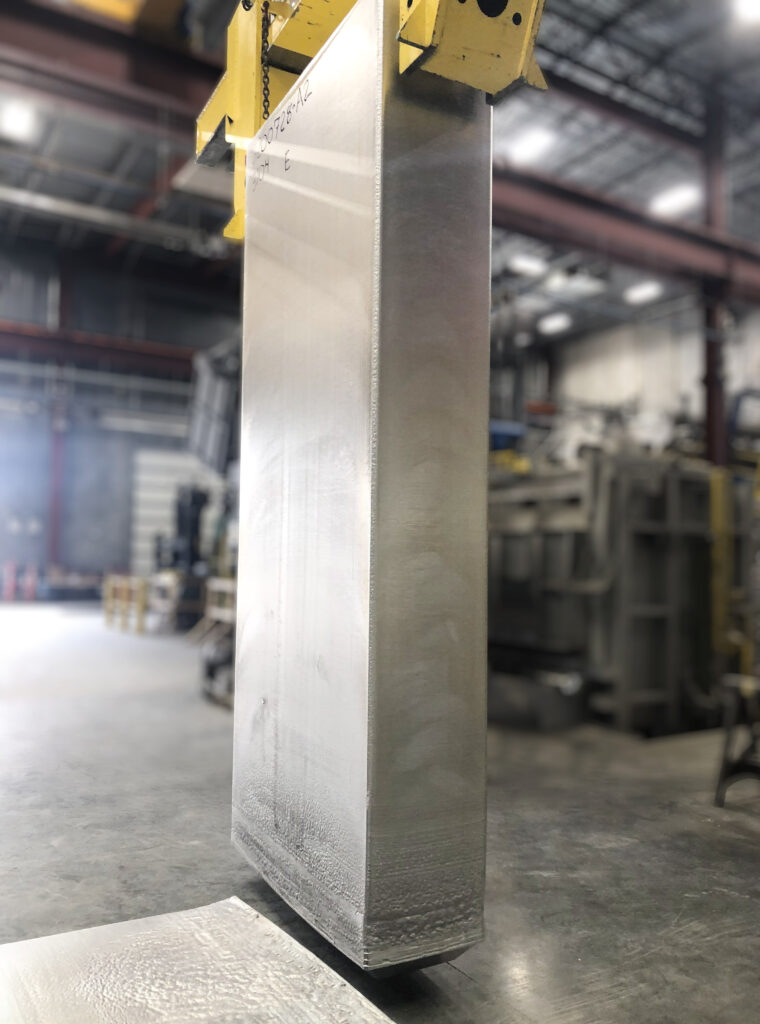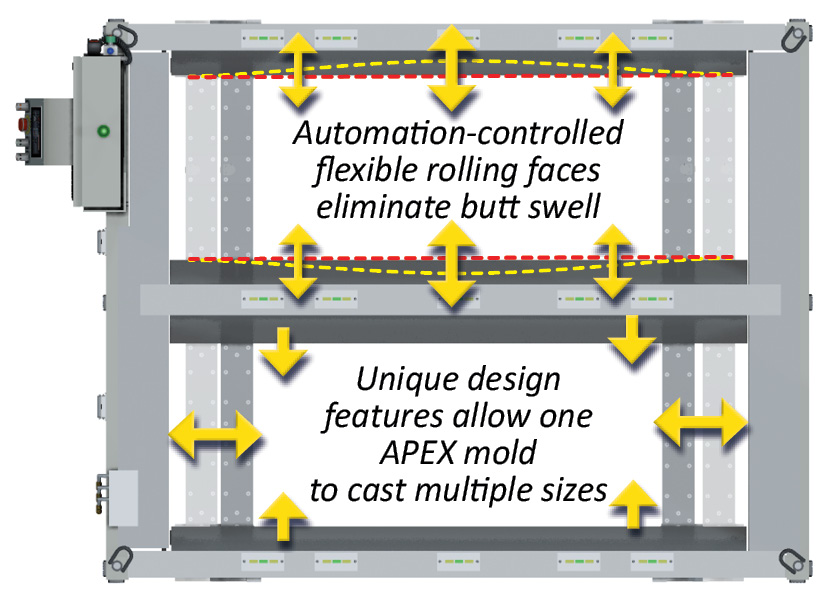Wagstaff, Inc., located in Spokane Valley, WA, is a leader in the development of direct chill (DC) casting of aluminum billet and rolling ingot (slab). With over 75 years of innovation, the company has a long history of research and development of new solutions for DC casting. Recently, the company introduced its new APEX™ technology for aluminum rolling ingot, which uses patented, recipe-controlled mold bore flexing throughout the casting cycle in order to tightly control the ingot shape (Figure 1). This mold technology can be designed and adapted to existing casting pits without any loss of strands.

Eliminating Butt Swell
One of the main challenges in casting aluminum rolling ingot is the issue of butt swell, which is an expansion of the lower end of the DC-cast ingot resulting from reduced shrinkage from the convex mold wall. Unavoidable in molds with fixed bore openings, butt swell happens when the casting speed is outside of the mold’s steady state specifications. Essentially, it is caused by a lack of shrinkage away from the mold bore, before the molten sump develops and speed increases. Butt swell results in a finished shape that is not flat, which increases waste, as the butt swell has to be removed prior to rolling. Most fixed mold bores attempt to reduce butt swell by operating at slower casting speeds, which means lower production rates.
On the other hand, APEX is a dynamic technology that uses a flexible mold bore, which is configured in accordance with the specific aluminum alloy and casting parameters (Figure 2). During the casting cycle, the mold bore changes contour to produce flatter ingots.

Flat ingots offer casthouses a number of benefits. Notably, they reduce the need for scalping, resulting in improved pit recoveries as well as reduced scrap handling and storage requirements. In addition, flat ingots can be stacked more efficiently, which reduces space requirements. It also makes the stacks of ingots more stable, which improves safety for personnel working in the plant.
Faster Speeds
Combined with shape control automation, the optimized APEX mold bore enables aluminum casthouses to increase casting speeds by up to 25% without the loss of product quality. Higher casting speeds can add days or even weeks of extra casts.
The APEX mold features SplitJet™ water technology, Wagstaff’s well-proven system, which has been implemented on the company’s LHC™ and Epsilon™ molds. The SplitJet system is designed with a dual water chamber that allows for fast and efficient aluminum solidification performance. This enables a high cooling rate during steady state casting, resulting in improved metallurgical properties and less ingot curl. The primary and secondary jets can be controlled to optimize the cast start and casting cycle.
The APEX technology is also available in a graphite-lined version, APEX-GL, which provides superior surface quality. The graphite lined mold also results in a 95% reduction in oil consumption over a conventional mold. This reduces the use of resources and minimizes the potential risk of water contamination.
Flexible Mold Sizes
With the APEX mold technology, a single mold set can be adjusted to multiple sizes. Therefore, new sizes of ingot can be implemented within minutes, improving response times to customer requests, while meeting rapidly changing market demands.
In addition, because multiple mold sets can be replaced with a single mold set, there are reduced storage requirements. This also provides environmental benefits, as mold production output is reduced, which decreases the mining, smelting, rolling, machining, and transportation requirements.
Editor’s Note: This article first appeared in the February 2022 issue of Light Metal Age. To receive the current issue, please subscribe.
